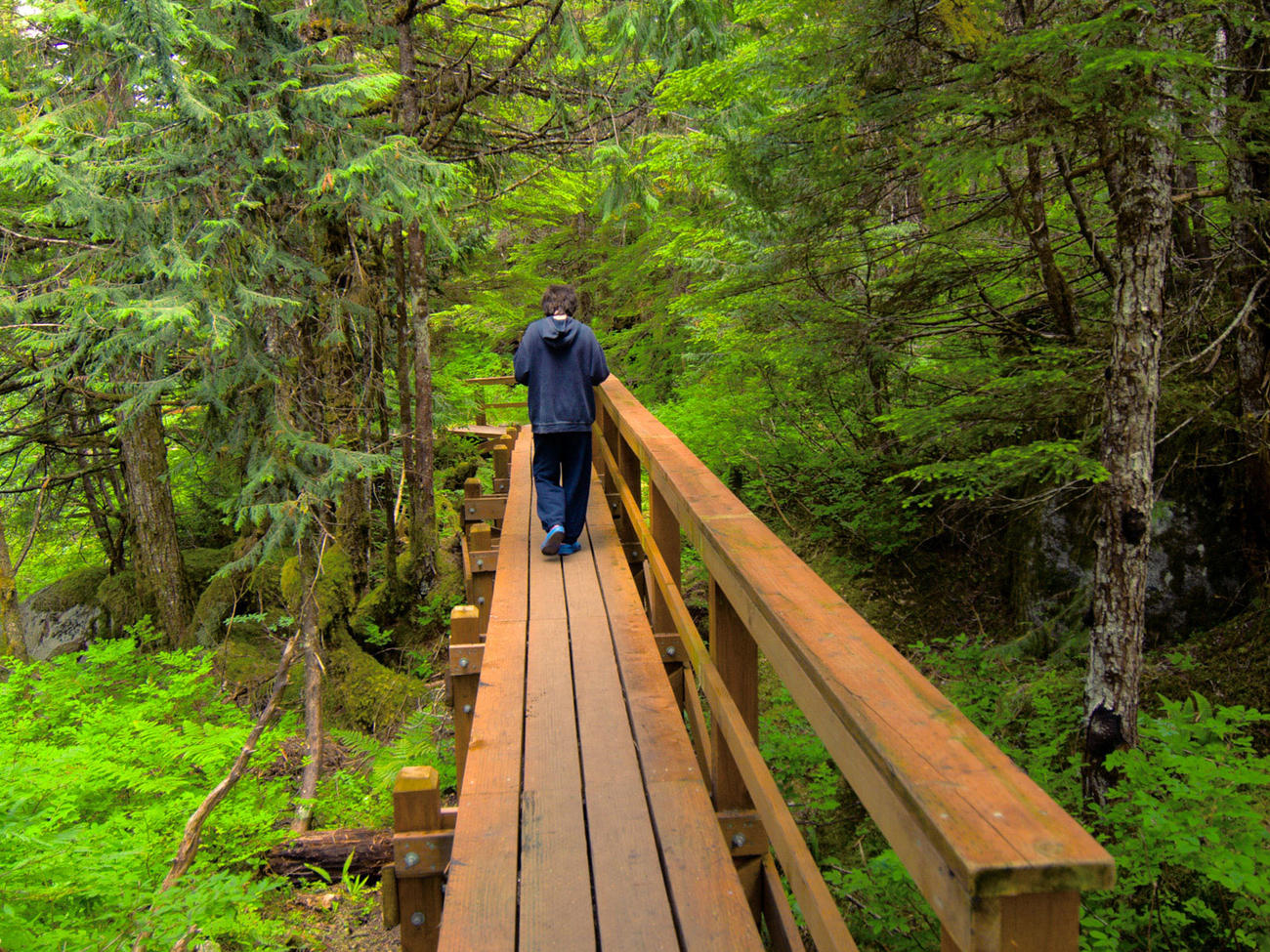Discover Uncrowded Alaska in Sitka
A long-lost local discovers Sitka’s secrets by visiting it over and over again

When people find out I grew up in Alaska, they want to hear snow and ice and polar bears. But Sitka is eagles over a whale-filled sea, a rain forest where the only bears are grizzlies. Lots of those. They’d get stuck in your dog door. Or wander down off Gavan Hill to peek in on the school, making social studies class a lot more fun.
Save a traffic light or two, Sitka itself hasn’t changed much. Alaska’s fourth-biggest town, with about 9,000 people, lies on the outer edge of the Alexander Archipelago, the chain of islands that snakes down parallel to the Canadian coast. It’s the only one of Southeast’s towns where you can see the open ocean, stretching away toward Japan, interrupted by tiny barrier islands that make the water in Sitka Sound so smooth that a landing seabird’s wake can be 100 yards long. While neighbors Juneau, Ketchikan, and Skagway see close to 900,000 cruise ship passengers a year, Sitka gets a fraction of that, about 100,000. Which means this town has been able to remain itself. Each spring, locals take a lesson from the Native Tlingit and go down to the beach to eat herring eggs straight off sea kelp. There’s no festival or cheeky news stories to announce the event; it’s just something people do, have always done, here.In 1799, after the Russians killed everything with fur in the rest of Alaska, they moved their capital here, calling it New Archangel. Which didn’t exactly thrill the Tlingit, who’d spent centuries in the place they called Shee At’iká. The major battle came in 1804: The Russians had big ships and lots of gunpowder. The Tlingit understood the landscape. They melted into the forest and kept raiding for another 50 years.
The harried Russians hired Finnish shipwrights to build the double onion domes of St. Michael’s. But that’s not the church standing today. Late on January 2, 1966, someone spotted flames in the cathedral and raised the alarm. Half the town turned out. They broke down the doors, formed a human chain, and retrieved artwork, icons, and statuary as the building burned to the ground around them. Nearly everything vital was saved, nobody was hurt, and the Russian church became Sitka’s church, because the town itself had rescued it.
Each Sunday, services are held in English, Tlingit, and Church Slavonic. Outside, the blue-gray domes blend into the sky’s dripping clouds, the ones that hide the mountaintops most of the year. Tourists call the weather here rain; locals call it Sitka sunshine. But today I notice something I’ve never seen before. I catch the church from an angle that looks back toward the sea, and it blends right into the waves as they split around the barrier islands that protect the town from the wild Pacific. Maybe that’s really why the Russians hired shipwrights: to make a building out of water, a mirror of sea and rain. With that in mind, I decide to go see what else might look different to me today. I stop by my favorite reindeer sausage stand for a bite, before climbing back into the car and driving the 7 miles south.It makes me wonder what else I haven’t yet noticed. So it’s back in the car and on the road, where I pick up a hitchhiker who’d been camping in the woods for a week. He’s 20 years younger than I am and armed with a high-caliber rifle, not an uncommon sight in these parts.
We know the same people; we had the same teachers in school. Sitka never changes, but everything changes. He knows better spots for picking berries than I do, and when I drop him off, I get to see one of the new traffic lights. It’s oddly exciting. Sitka, I’m thinking today, is a town built like a matryoshka doll, histories nesting inside histories. Which does leave one question: What’s the smallest doll inside, the one everything else is based on? If the Russians built their church out of water, what did the Tlingit, who knew the place best, do with the landscape? So I drive to the only place I can think of that answers that: Sitka National Historical Park. Totem Park, as locals call it, is a 10-minute walk from the cathedral. But that 10 minutes is the difference in how the Russians saw the land—something to conquer and then mirror before it was too late—and how the Tlingit saw it: as home. Long ago, I went on a thousand dog walks in this park. Walked with the first girl I ever truly loved, a girl who, when we talk about Sitka now, both wishing we had even more reason to go back, just says, “It’s too beautiful, too green, too fresh, too real.”